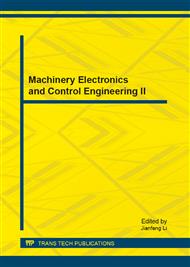p.817
p.821
p.828
p.833
p.837
p.843
p.847
p.853
p.858
Power Characteristic Analysis and Optimization of Point Absorber Wave Energy Converter
Abstract:
Compared with other wave energy converters, point absorber wave energy converter (WEC)is more suitable for small wave conditions, and adapts to China’s coastal wavecharacteristics. Based on the linearregular wave theory, the power characteristic of point absorber WEC wasanalyzed in the paper. Using numerical calculation method based on linearpotential flow theory in frequency domain, we calculated the hydrodynamiccoefficients and response amplitude operator (RAO) of floater in wavecondition. And then the power of the point absorber WEC was calculated undergiven conditions. Based on the calculation, we studied the rule of influence of WEC’s major parameters to its output power. The research result offer importanttheory foundation for optimal design of point absorber WEC’s power characteristic.
Info:
Periodical:
Pages:
837-842
Citation:
Online since:
March 2013
Authors:
Keywords:
Price:
Сopyright:
© 2013 Trans Tech Publications Ltd. All Rights Reserved
Share:
Citation:


